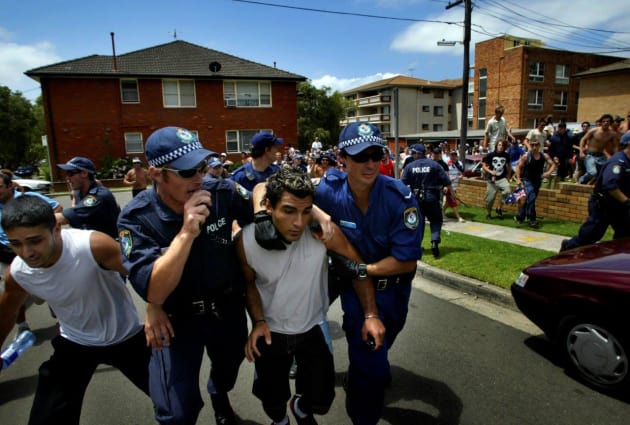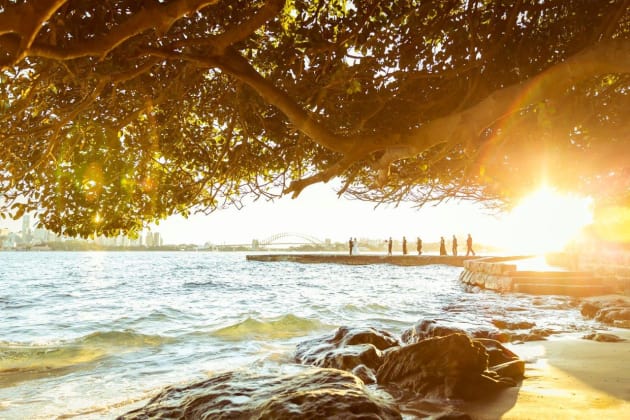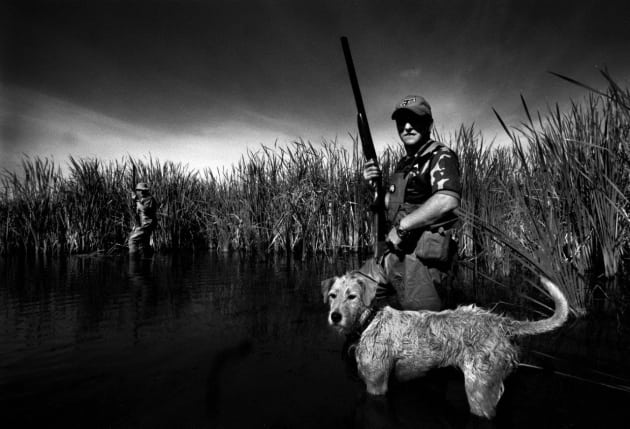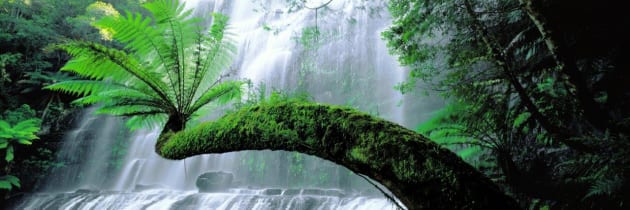Know you rights - Shooting in public
Recent events once again shine a light on the rights of photographers to capture images in public spaces. Paul Clark investigates to highlight just exactly what’s within your legal lights.
Internationally renowned landscape photographer, Ken Duncan made the news last year when he was accosted by ‘customer service staff’ for taking photos at Sydney’s new Barangaroo Reserve.
As was widely reported at the time, on the day of the altercation, Duncan had gone to Barangaroo to take some photos – at no charge - for friends at a sandstone quarry who had supplied material for the park. Barangaroo Delivery Authority (BDA) staff saw Duncan looking too ‘commercial’, as he had a tripod, and went to question him. He was told that police could be called, though that didn’t eventuate.

The humble photograph seems to be more controversial now than at any time in its long and distinguished history. The modern day fears of terrorism, perverts, and brand devaluation seem to be a sort of unholy trinity driving a push to restrict photographers. Pushing from another direction is a social media fuelled love of exposing every aspect of our lives through photos and video on social media. In this article, we separate fact from fiction, and make some sense of this strange and conflicted world.
Fact vs fiction
In photography, as in many other areas of life, there is a significant divergence between what the average person believes to be the law, and what is in fact the law. Photographing people on the street is one of these areas where divergence between belief and reality is common. Detail of legislation varies by country, and in Australia by state and territory, so photographers need to check local laws where they are shooting. For those shooting in Australia, most state jurisdictions have some things in common.
In Australia, contrary to popular belief, there is no ‘right’ to individual privacy enshrined in law. Generally, photographers can freely photograph everyday objects or people, provided they break no other laws. Commonwealth and State privacy laws protect stored personal information, but do not cross into the territory of photographing people or objects. There is nothing, for example, to prevent a photographer standing on a footpath and photographing a person at their front door. This is why it happens all the time for ‘doorstop’ interviews.
Shooting from the pavement
If a photographer stands on a person’s land, they may be trespassing and can be asked to leave. This applies to shopping malls and similar privately owned spaces, where although frequented by members of the public, are not ‘public’ space. A media photographer trying to get a story who is asked to leave private property will generally do so, and resume shooting from the footpath. The footpath, with a few exceptions, is not somewhere a person can be prevented from taking photographs.

Our hypothetical photographer on the footpath could be moved on by police if their presence creates a nuisance, perhaps if they blocked the way or caused some other disturbance, but generally they are acting entirely within the law. Otherwise, Australian police generally cannot prohibit photography. The NSW Police media policy is a good example of typical Australian police powers. It states that “Police have no specific rights or powers to do anything to prevent the media taking photographs of or filming police officers or family members at crime scenes, if the media remain out of the crime scene itself and obey all other laws”.
What can police do?
In NSW, the Police media policy is clear: “Police may have powers to prevent a member of the public from taking photographs or filming, or confiscate equipment or deleting images only in certain limited circumstances.” These are words that need to be read carefully, especially the words ‘only’ and ‘limited circumstances’. Those circumstances are: “Where they have been given special powers under anti-terrorism legislation; or where taking photographs or filming images amounts to offensive conduct under the Summary Offences Act 1988”.

One of those summary offences might be attempted ‘upskirt’ photography without consent. In any such case, one imagines that deleting images on the spot would not be a very smart idea if the images were to be needed for evidence of a crime. So, in the absolute worst theoretical case, a photographer could be arrested on suspicion of taking indecent photographs without consent, but would not have their equipment or storage media damaged in any way.
Let’s ensure this is clear. There is a right to take photographs on a phone or a camera in most circumstances. The NSW Police Media Policy states: “Members of the public have the right to take photographs of or film police officers, and incidents involving police officers, which are observable from a public space, or from a privately owned place with the consent of the owner/occupier.”
In the normal course of events, excluding the Defence Act, no one can legally demand that a photographer delete images and an attempt to do so by force would be assault. Vigilante citizens, surf lifesavers, security guards and so on certainly cannot do so.
By comparison, in the UK, the Metropolitan Police state that it is legal to film or photograph incidents or police personnel. They do, however, already have the power to stop and search people and seize equipment if they believe the person may be engaged in terrorism (s43 Terrorism Act 2000). Section 58A of this Act goes further and provides that it may be an offence to publish information – including photographs – about members of the security forces.
Equally, the UK Metropolitan Police may question any individual taking photographs provided they do not inhibit that person from doing something which is legal. Of course, the vast cast of private security guards and concierges and so on also found in the UK have no police powers, but could call the police if they thought a photographer might be a terrorist.
Photographing private homes
In Australia, there is usually nothing to prevent a photograph of a home, home owner or person on a property being taken from the street. A home owner coming out the door, or standing at the window, is all fair game if the photographer is on the street. Poking a lens through the bedroom window is not fair game, however. This would fit into a broad category of laws against various forms of voyeurism as well as trespass.
Similarly, in Australia, various laws prohibit attempts to take so-called ‘upskirt’ photographs, or other indecent photographs of people where they have a legitimate expectation of privacy, such as in changing rooms.

Politics and journalism
When a story must be told it is usually the photojournalists who are in the front line – literally and figuratively – and may be criticised for being too intrusive. Renowned photojournalist Dean Sewell says that he has “never really been concerned with the legalities of photographing in public places. Rather, it has been my moral code and ethical conduct that has governed my practice as a photojournalist and street photographer.” Sewell is determined that scenes happening in public should be recorded, even if the images are uncomfortable for some.
What does that mean in practice? Sewell describes covering the story of anti-coal seam gas demonstrators at a clandestine camp in the bush, at a location we won’t disclose. Both they, and he, were trespassing. Sewell says that a complex legal framework meant fines of up to $2000 against protestors or anyone else caught in the forest. “Documenting these actions meant that I was, like the protestors, at risks of heavy fines if caught within the forest,” he says. “I would often find myself in a dually compromised situation, being trespassing on a mining lease whilst within restricted crown land. I would often have to travel under the cover of darkness in the early hours of the morning with the protestors, photograph their illegal actions, and then get out of the forests with my material before the arrival of the police.”
Sewell also describes events on the street where his legal right to shoot in a public space was not sufficient to allow him to keep shooting. Photographing a car search carried out by police in an inner city suburb, Sewell was approached by several plain clothed police. “They told me to move along, and I told them I was within my rights to remain on the footpath out of their operational space,” he says. “They disagreed and told me if I didn’t remove myself they would physically remove me. I refused to go and so two burly officers grabbed hold of me on each arm and dragged me for 50 meters down the street.”
Shooting the military
An old but perhaps not that well known restriction is on the photography of defence equipment, establishments, and even personnel. In Australia, the Defence Act 1903 (Cth) prohibits photography of Defence bases. In fact, according to section 82 of the Act: ‘If a person makes a sketch, drawing, photograph, picture or painting of any defence installation in Australia or of any part of one; and the person has no lawful authority to do so,’ they can be fined $200 and/or jailed for six months.

The Defence Act goes on to state that: ‘Any member of the Defence Force, member or special member of the Australian Federal Police or member of the Police Force of a State or Territory, may, without warrant, arrest any person who he or she has reasonable ground to believe has committed an offence against this section.’ Think about that next time you are photographing Amphibious Assault Ships at Garden Island, in Sydney. Australia, despite this, is quite liberal compared to some countries where photographing defence bases or coming too close to security forces could result in injury, such as the gunshot wound suffered by AFP photographer, Asif Hassan during an anti-Charlie Hebdo demonstration in Karachi, in 2015.
Publishing your images?
Taking images is one matter – publishing them or profiting from them is another. It’s worth examining the case of the Sydney Opera House (SOH). Their website states that they consider wedding photos ‘acceptable’. But does that mean that it’s OK to put those shots on the Internet? Well, not entirely.

For the wedding couple, photos taken at the SOH are considered ‘for personal use’ so they can Facebook away all they want. The photographer may wish to use the wedding photos taken there to promote his or her business, but the Opera House may not hold this to be acceptable. The Opera House guidance says: ‘In instances where SOH merely forms a backdrop to the wedding couple or only a small proportion of the wedding photo, it is possible that SOH will have no objection to your use of the SOH image to advertise your wedding photography services. If you are not sure whether your proposed use raises concerns, please contact us and we can provide you with specific guidance.’ Well, that all sounds a bit dire.
Of course, the Opera House having an objection may not automatically mean that the photographer cannot use the image, but this is enough to put many people off. The Opera House has also taken the additional step of making the exact image of the building a registered trademark. This allows the Sydney Opera House control over commercial use of images of the building, such as on clothing or souvenirs. It does not prohibit photography of the building from another public place, but might be used as an argument against a photographer using an image commercially.
It’s not only the Opera House. Regulation 12.38 of the Environment Protection and Biodiversity Conservation Regulations 2000 (Cth) says that a person must not use a captured image of a Commonwealth reserve, which includes iconic areas, such as Uluru, to derive commercial gain. ‘Captured image’ includes an image that was not captured for a commercial purpose. If personal photographs are accessed for commercial purposes (for example, copied off social media), the user, not the photographer, will be in breach of the regulation.

Does the Public really own ‘public places’?
Some public places appear to be quite open for anyone to do whatever legal activity they wish but are actually regulated by some authority or other. In NSW, railway stations are a good example. Large, crowded and seemingly very public, you cannot shoot there – at all – without permission. According to Transport for NSW, even a ‘hobbyist’ or amateur photographer must seek permission to take photos.
Astonishingly, even a photography student has to apply for a permit at a processing cost of $110. A professional seeking to do a ‘low impact’ shoot involving 1-25 people must pay an application fee of $550. It is understandable that government departments need to control what takes place on their properties, but $110 seems a high price for a student.
It’s not all bad news. City of Sydney does not charge an application fee for filming and photography in Council open spaces as long as you cause no disruption. You are still expected to apply, and Council will also check that you have insurance cover.

Permits to stop clashes
In practice, what seems to be a long list of regulations does not always get in the way. For example, the Sydney Opera House staff are courteous and friendly, says wedding photographer, David Stowe. Stowe has shot there many times and never had any problems, although he has had problems elsewhere – not with officials, but with wedding parties crowding into popular photography spots when he has a permit, and they do not. “A permit system can be good from a management perspective,” says Stowe. “Shooting wedding photos at a popular spot like the pier of Bradleys Head, you don’t want groups clashing or getting in each others’ way.”
Some parks such as Sydney’s Middle Head allow photographers to register at no charge for a standing permit to shoot there. “It’s just a management procedure so they know who’s on site,” says Stowe. “It’s the same at QVB. You don’t pay to shoot there, but you do need to check in for safety briefings and so on.”
How to spot a professional – a field guide
One of the things that really annoys Duncan about his situation at Barangaroo is that he was singled out by ‘customer service’ essentially for having a tripod. He thinks it is needlessly intrusive to have authorities questioning people who are doing innocent things. “Why are we comfortable with ‘security’ going and questioning people in a public place?” he asks. “Furthermore, why is it OK to take pictures with a tripod during some festival like ‘Vivid’ [where Sydney is lit up at night for art] and then when it’s finished it’s not OK again?”
Duncan argues that it is dodging the issue to just pay the fees, if any, for ‘commercial photography’. He says that in Australia, there are too many authorities in charge of too many locations such as national parks, public parks, buildings and landmarks. Not only is it a bureaucratic tangle working out who can give permission to shoot where, but also, according to Duncan, the administrative hassle is harming business development.
Duncan is not suggesting that photographers be allowed to block access or restrict other people from enjoying parks. “As long as a photographer doesn’t want more rights or access than anyone else,” he says, “why shouldn’t we take photos without special permits?”
Stowe agrees that there’s no need for iconic sites to be scared of professional photographers. “Professional photography is good to help maintain the status of those locations,” he says. “It helps them retain an image as prestigious and desirable.” He also agrees that professionals should not be discriminated against on the basis of supposed equipment load, as amateur shooters may carry the same, or even more equipment compared to pros.
Nip bureaucracy in the bud
Duncan is concerned that the public space environment for all photographers is what is at risk. “This is the real issue,” he said after the incident at Barangaroo. “If we don’t act now, things will get worse. Photographers already get bailed up, just taking personal photos. We should not get treated like criminals.” When we interviewed Duncan again recently, he said that he planned to follow up with NSW Premier, Mike Baird, who had taken an interest in the matter, to see what had been done to deal with the issue. If nothing’s been done, Duncan suggests it is time for a photographers’ protest rally.

